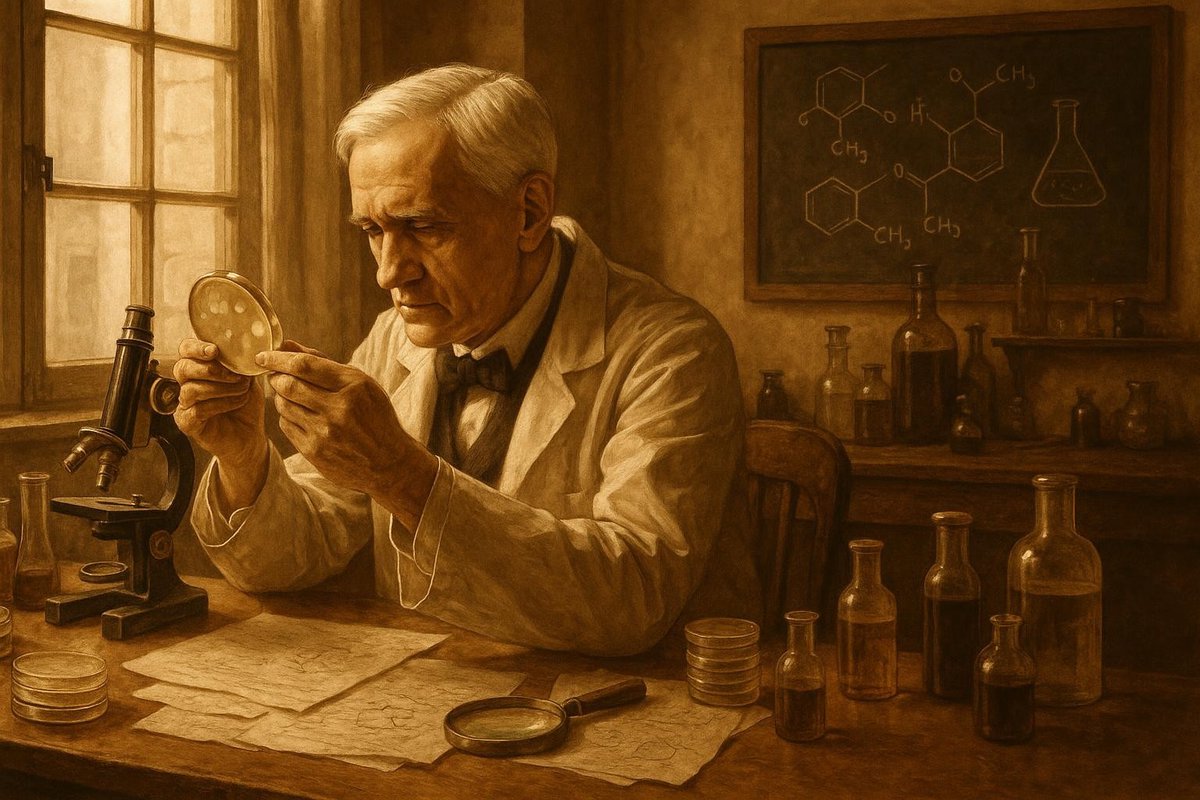
Origin: An Accidental Encounter with Mold
In the autumn of 1928, Alexander Fleming returned to his laboratory at St. Mary’s Hospital in London after a holiday, only to find a peculiar scene. Remarkably, he noticed that a mold had developed on a set of Petri dishes he had been using to culture Staphylococcus bacteria. Interestingly, wherever this mold grew, the surrounding bacteria had been destroyed.
- This accidental observation was not the first time mold had shown antibiotic properties.
- However, it was the first documented instance where its potential was realized and pursued.
- Fleming’s curiosity was piqued by the peculiar clear zone surrounding the mold.
Before this discovery, infections often spelled doom. While some antiseptics existed, they were largely ineffective inside the body. The cultural and scientific climate of the time was ripe for innovation. Fleming’s observation, although seemingly trivial at first, was the right breakthrough at the right moment.
Key Figures: The Man Behind the Mold
Fleming was no stranger to the microscopic world, having spent years researching bacteria. Yet, it was his ability to recognize the significance of the mold that set him apart. Of course, he wasn’t alone in his journey to uncover the mold’s power.
- Howard Florey and Ernst Boris Chain later played pivotal roles in penicillin’s development.
- Fleming’s earlier works on lysozyme had primed him for this moment.
- Their collective efforts eventually transformed penicillin from a laboratory curiosity to a lifesaving drug.
The collaboration between these scientists exemplified how teamwork and interdisciplinary approaches can propel scientific advancement. While Fleming had identified the mold’s potential, it was the systematic efforts of Florey and Chain that turned penicillin into a usable treatment, reflecting the importance of continued exploration and collaborative innovation.
Turning Point: From Observation to Application
The path from discovery to widespread use was not straightforward. Fleming had isolated the mold, Penicillium notatum, but refining it into a form that was therapeutically viable required further ingenuity. It was Florey and Chain who, during the late 1930s, developed methods to mass-produce penicillin.
- They faced challenges in stabilizing and purifying the compound.
- The outbreak of World War II heightened the urgency for effective treatments for wound infections.
- By 1944, penicillin was widely available to Allied forces.
This period marked a turning point, not just in the treatment of infections, but in the entire field of medicine. The success of penicillin paved the way for the discovery of other antibiotics, forever altering the landscape of medical treatment.
Impact on the World: A Medical Revolution
The introduction of penicillin revolutionized modern medicine. Before its widespread use, bacterial infections often led to severe outcomes, but penicillin changed that narrative dramatically.
- It significantly reduced mortality rates from bacterial infections.
- Penicillin became a symbol of hope, especially during wartime.
- Its discovery spurred the golden age of antibiotic discovery in the mid-20th century.
The impact of penicillin extends beyond saving lives; it has fundamentally altered how we approach disease and infection. Many people believe that the development of antibiotics like penicillin ranks as one of the greatest achievements in medical science, a testament to the power of observation and perseverance.
Today, as we face challenges like antibiotic resistance, the legacy of Fleming’s discovery reminds us of the importance of innovation and vigilance in science. The journey from a forgotten Petri dish to a cornerstone of modern medicine continues to inspire researchers worldwide.
Fuel Someone Else’s Curiosity
If you found this story of accidental genius and scientific triumph intriguing, share it with others. You never know who might be inspired by the curiosity and persistence of those who came before us. Let’s keep the spirit of discovery alive by fueling someone else’s curiosity today.

Leave a Reply